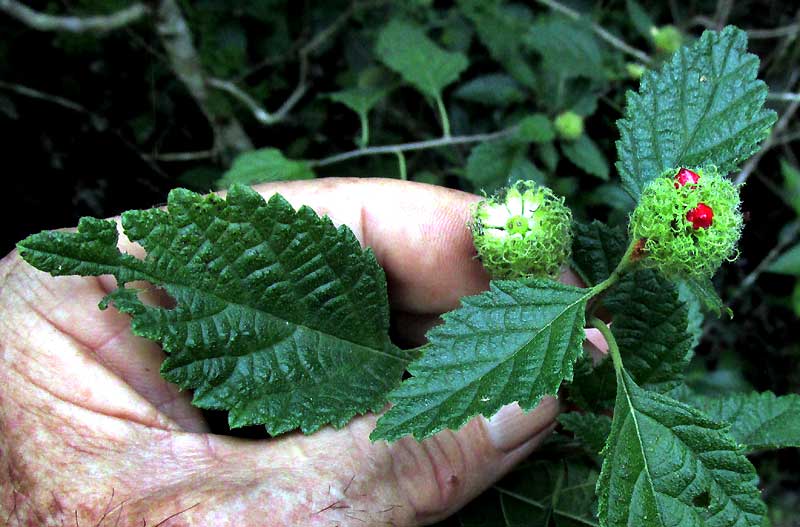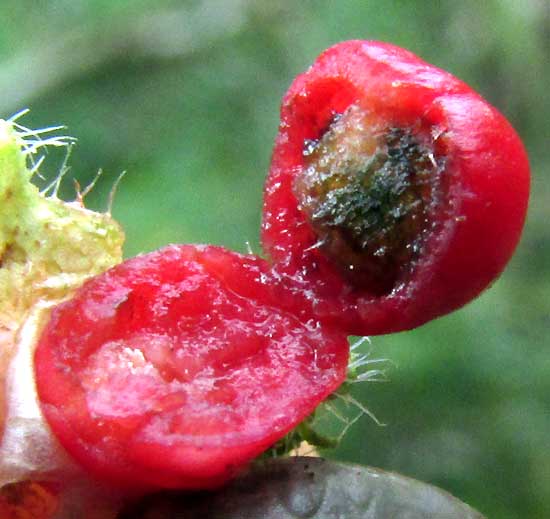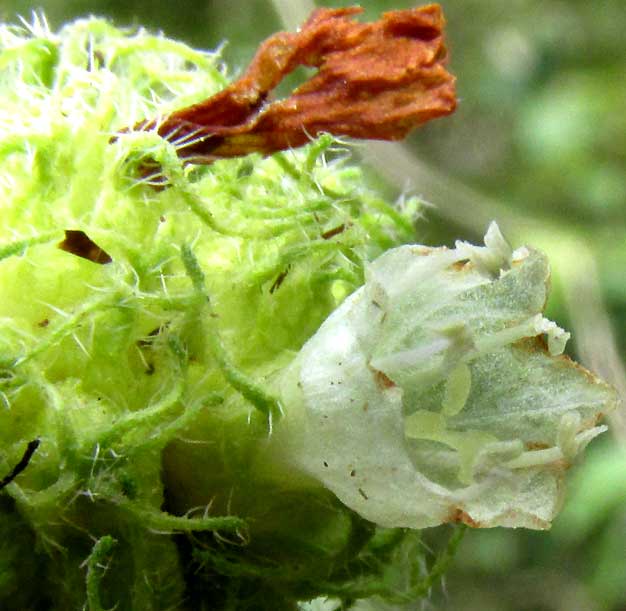Excerpts from Jim Conrad's
Naturalist Newsletter
Entry issued on September 12, 2019, from the forest just west of Tepakán; elev. ~9m (~30 ft), N21.053°, W89.052°; north-central Yucatán state, MÉXICO
VARRONIA BUSH
A remarkable bush growing to about ten feet tall (3m) is uncommon but not rare in the much disturbed forest around the hut. A fruiting branch tip is shown below:

The leaves alternate on the stem, which surprised me, since the leaves look so like those of the Mint and Verbena Families, who nearly always produce two leaves opposite one another on the stem. The yellowish-green, spherical items are fruiting heads, and the red item is a fruit, a combination of features that didn't ring any kind of bell. I don't find more than one or two fruits per head, so most flowers never set fruit. Below, you can see that the drupe-type fruits are fleshy and contain one hard, woody seed:

A few heads still are producing white flowers, shown below:

All the flower's parts are so white that they're hard to make out, but you can see that the corolla is tubular and that the stamens are mounted on the corolla tube. After flowering, the corollas turn dark brown. Also, in the picture it's clear that the heads' "fuzzy" appearance is produced by the calyxes' long, slender, hairy and curling sepal tips. Below, you can see how the flowers are crammed close to one another on the short, thick rachis, which remains pitted when the flowers fall off.
The above features kept sending me to that branch of the phylogenetic tree bearing the Verbana and Mint Families, but our plant-s one-seeded fruits in spherical heads and the alternate leaves just didn't fit those families. On the phylogenetic tree a family close to the Verbena and Mint Families is the Borage Family, so when I looked there, there it was, though these plants are unlike any Borage Family member I've ever seen.
It's VARRONIA GLOBOSA, in the old days called Cordia globosa. Despite my never having noticed this species, it's distributed throughout southern Mexico, and the rest of the New World Tropics generally. Despite its broad distribution, I find little information about it on the Internet.